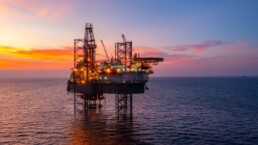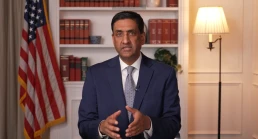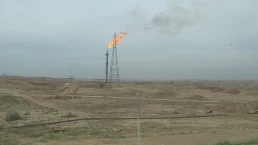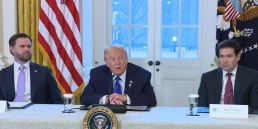The oil giant wants to convince the public that its new ultra-high-pressure offshore drilling project, Anchor, is climate-friendly.
By Arielle Samuelson, Heated
One day after Hurricane Helene dissipated, the Politico newsletter Power Switch ran a story detailing the terrifying nationwide implications of fossil-fueled storms.
“Nowhere is safe from climate disaster,” the headline roared. “Presented by Chevron,” the next line read.
What followed was a back-and-forth between Politico’s reporters and Chevron’s marketing team. For a few paragraphs, readers were given journalism about Helene’s astronomical human and economic toll. Then, they were given a break for a paid message about Chevron’s new “Anchor” project—an ultra-deepwater drilling endeavor that the oil giant claims will deliver “some of the world’s lowest carbon intensity oil and gas.

Chevron’s sponsorship in Politico was perhaps its most dystopian example of climate-focused advertising about the Anchor project in recent weeks, but it was far from the only one.
During Climate Week NYC—the annual event that brings together diplomats, politicians, activists and corporate leaders to talk climate solutions—Chevron placed Anchor ads in The New York Times, NPR, and sponsored the Axios climate newsletter. It also advertised Anchor across social media.
But what is the Anchor project, exactly, and why is Chevron marketing it to climate-focused audiences?
The $5.7 billion facility, located 140 miles off the coast of Louisiana, is the first time an oil company has cracked the code on how to drill in previously untouched, dangerously high pressure deep sea environments. The technological achievement, which took Chevron a decade, will allow the fossil fuel industry to reach underwater oil and gas fields up to 20,000 pounds per square inch pressures, a third greater than any prior well.
Recent Posts
‘ICE Has Gone Rogue’: Khanna Demands Arrest, Prosecution of Jonathan Ross for Murder of Renee Good
January 14, 2026
Take Action Now “We need to hold ICE accountable and we need to uphold human rights in ICE facilities. This is the time for Americans to speak up.”……
Right Message, Wrong Messengers: A Brief History Of Oil And U.S. Empire In Iran
January 14, 2026
Take Action Now Since 1979, the U.S. has pursued policies aimed at ensuring the failure of the Iranian Revolution.By Eric Ross, Z Network Multiple…
Trump Intensifies Threats Against Cuba
January 13, 2026
Take Action Now The US president warned Cuban authorities that if they do not engage in dialogue, it will soon be “too late.” Cuban authorities have…
‘Uninvestable’: Oil Execs Rebuff Trump’s Demands For $100bn Investment In Venezuela
January 12, 2026
Take Action Now The US Energy Secretary denies ‘stealing’ Venezuelan oil, despite a plan to hold revenues in offshore accounts under US…




